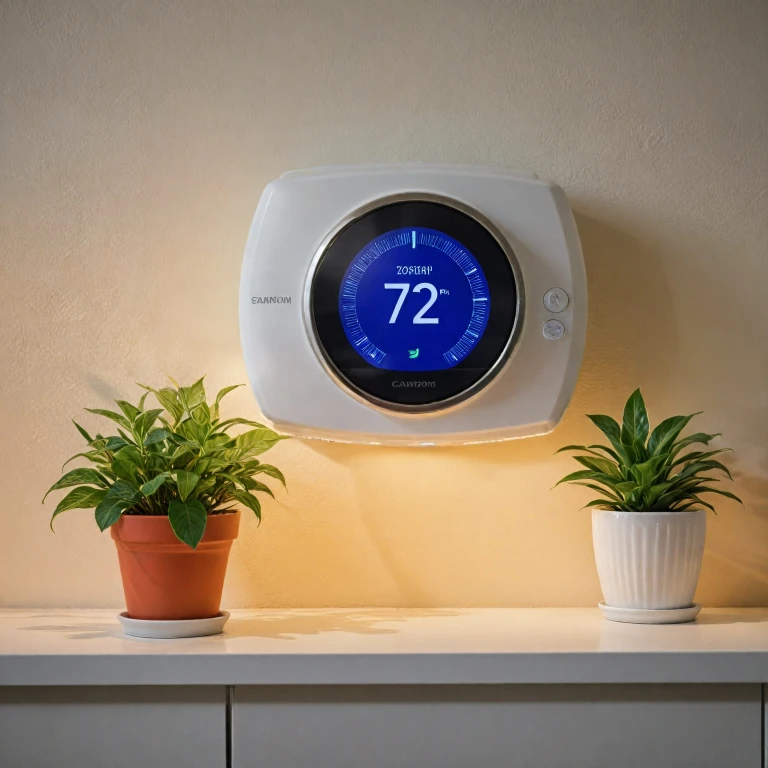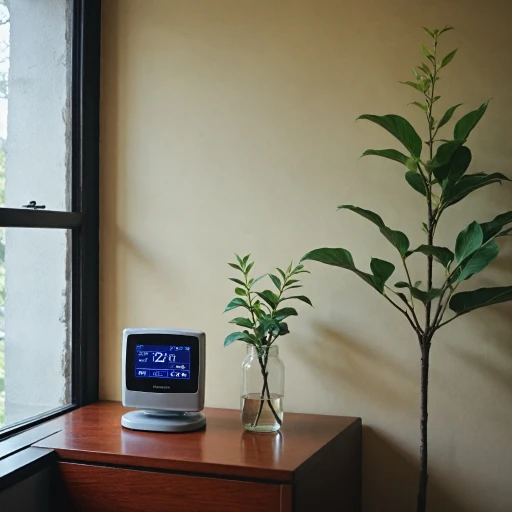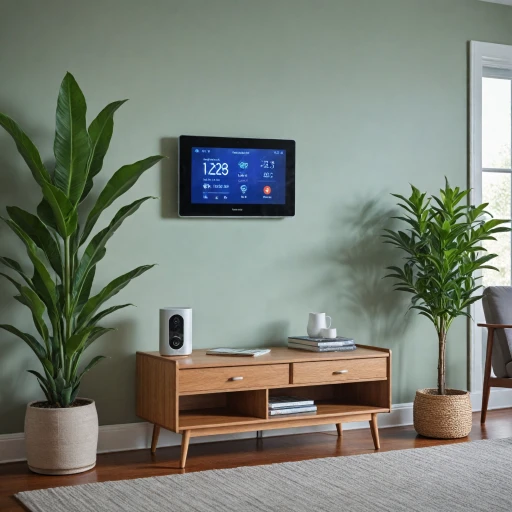What is a Two-Stage Thermostat?
Discovering the Two-Stage Operation
A two-stage thermostat serves as a more refined solution compared to traditional single-stage models. This type of thermostat optimizes your HVAC system's performance by offering two levels of heating and cooling, rather than simply turning the system fully on or off. The first stage typically runs at a lower capacity to maintain a consistent temperature, while the second stage kicks in under extreme conditions, ensuring your space remains comfortable even during intense heat or cold.
While single-stage thermostats control the heating or cooling system with a simple on/off mechanism, the two-stage model provides a more gradual transition between temperatures. This not only makes it more efficient but also lessens the wear and tear on your HVAC system. The design is particularly beneficial for homes featuring systems like heat pumps or stage furnaces, which benefit from such incremental control.
Unlike single-stage thermostats, many two-stage options come equipped with smart features. Products like Google Nest Learning or Ecobee Smart Thermostat integrate advanced technology and programming capabilities. They learn your preferences over time, adjusting settings to optimize energy usage efficiently. These smart thermostats often support compatibility with devices like Alexa or other home automation systems, bridging convenience with modern technology.
Choosing the right model can depend on various factors. For instance, if you're interested in programmable options, exploring brands like Honeywell RTH or evaluating the Ecobee Smart Premium might be worthwhile. Each offers unique functionalities and price ranges, ensuring a product that meets your home's needs. As you explore the different models and capabilities, reviewing how different thermostats enhance comfort might offer deeper insights into optimizing your home's environment.
How Two-Stage Thermostats Improve Energy Efficiency
Boosting Efficiency with Dual-Stage Heating and Cooling
Two-stage thermostats are revolutionizing the way we manage energy within our homes, providing an intelligent approach to heating and cooling that goes beyond the basic capabilities of single-stage thermostats. Here's how these advanced devices enhance energy efficiency:- Variable Operation: Unlike single-stage options that operate at full capacity with every cycle, the two-stage thermostat provides a low and high operation stage. This means your heating and cooling systems can run at a lower capacity when full power isn't necessary, subtly adjusting the temperature to reach desired comfort levels without unnecessary energy use.
- Less Frequent Cycling: Constantly switching your HVAC system on and off can lead to higher energy consumption. Two-stage thermostats are designed to minimize this on/off cycling, thus saving energy and reducing wear and tear on equipment.
- Improved Temperature Control: Because these thermostats work more precisely by utilizing two stages of operation, they maintain more consistent indoor temperatures. This precise temperature control not only increases comfort but can also lead to noticeable savings on energy bills.
- Integration with Smart Home Systems: Many models, including popular products like the Nest Thermostat and Ecobee Smart Thermostat, allow integration with home automation systems like Amazon Alexa. This integration offers programmable thermostat settings with remote control via smart devices, further optimizing energy usage.
- Programmable Intervals: Many two-stage thermostats come with programmable functionality, allowing users to set temperature schedules according to different parts of the day. For instance, programmable thermostat types such as the Honeywell RTH series can be tailored for both weekdays and weekends, maximizing efficiency without sacrificing comfort.
Enhancing Home Comfort with Two-Stage Thermostats
Optimizing Indoor Climate with Smart Thermostats
When it comes to maintaining a comfortable indoor environment, two-stage thermostats offer a significant advantage over their single-stage counterparts. A stage thermostat operates in a dual mode, allowing for a refined control over both heating and cooling processes. This capability enables such devices to efficiently handle varying degrees of temperature adjustments, all the while conserving substantial energy. One remarkable feature about smart thermostats, including the popular Nest and Ecobee models, is their ability to maintain the desired temperature with minimal energy use. By operating in two distinct stages, these thermostats keep your home's temperature within 1-2 degrees of your setting, minimizing temperature fluctuations and ensuring that you’re neither too hot nor too cold. Moreover, these thermostats are equipped with programmable options that offer flexibility and convenience. A two-stage programmable thermostat can be set to automatically adjust the temperature according to your schedule. This feature means you're not wasting energy heating or cooling an empty house, and when you are there, the thermostat preemptively adjusts to your preferences. For those who have embraced the smart home lifestyle, integration with systems like Amazon Alexa and Google Nest allows for voice control and remote access. This means you can adjust your home's climate from anywhere, anytime, for unparalleled convenience and control. If you're considering upgrading to a two-stage thermostat, it's important to evaluate your specific needs, whether it's for a heat pump or a stage furnace, along with compatibility issues into account. Our comprehensive user guide offers detailed insights into optimizing your indoor climate with the right product.Compatibility and Installation Considerations
Compatibility and Installation Considerations for Two-Stage Thermostats
When looking to enhance your living space with a two-stage thermostat, it's crucial to first consider the compatibility and installation aspects. Understanding how a two-stage thermostat integrates into your home’s existing system involves a few factors.- Heating and Cooling Systems: Ensure your current HVAC system, whether it involves a single-stage furnace or a two-stage heat pump, supports a two-stage thermostat. Products like the Nest Learning Thermostat or the Ecobee Smart Thermostat often indicate compatibility on the packaging or product details.
- Wiring Requirements: Two-stage thermostats typically need more wires than single-stage options. If your HVAC setup is complex, it might be beneficial to consult a pro installer. Top choices like the Amazon Smart Thermostat or Honeywell RTH models provide clear online manuals to assist with wiring.
- Smart Home Integration: For those seeking a thermostat that integrates seamlessly with smart home systems like Amazon Alexa or Google Nest, verify that your stage thermostat has these capabilities. Programmable thermostat features, like day programmable settings and remote control, often add to the product’s appeal and energy efficiency.
- DIY Installation vs. Professional Help: Some users find installing a thermostat to be a straightforward task, especially if it's designed for user-friendly DIY installation. However, if you're unsure, hiring a professional can ensure optimal performance and avoid potential mishaps.
- Product Certifications: Look for certifications such as Energy Star, indicating that the product meets energy efficiency guidelines. Thermostat premium options, like the Ecobee Smart Thermostat, often come with these certifications.
Smart Features and Integration with Home Automation
Smart Integration with Home Automation Systems
When considering a two-stage thermostat for your home, it's important to evaluate the smart features it offers, particularly its ability to integrate with your existing home automation systems. Many advanced thermostats, like the Google Nest and Ecobee Smart, provide exceptional control over your heating and cooling systems through smart platforms. Modern two-stage thermostats can seamlessly integrate with virtual assistants like Alexa and Google Nest, allowing you to control your thermostat with simple voice commands. This innovation not only makes temperature adjustments more convenient but also improves the overall user experience.- Compatibility with Smart Home Ecosystems: Products like the Amazon Smart thermostat work well with other smart devices, creating a cohesive smart home ecosystem. Ensure your chosen thermostat supports your specific devices and platforms.
- Remote Access and Control: Many stage thermostats come with mobile apps that allow you to monitor and adjust your home’s temperature settings from anywhere, providing flexibility and added convenience.
- Learning Capabilities: Advanced thermostats, such as the Nest Learning and other Energy Star certified models, can intelligently learn your household's temperature preferences over time. This feature means the thermostat can anticipate your needs, optimizing energy use without sacrificing comfort.
Choosing the Right Two-Stage Thermostat for Your Home
Finding the Best Fit for Your Home
Choosing the right two-stage thermostat requires careful consideration of several factors. The aim is to strike a balance between compatibility, performance, and the smart features you desire. Here are a few points to keep in mind:- Home Compatibility: Make sure the thermostat is compatible with your current heating and cooling system. Two-stage thermostats work best with two-stage furnaces and air conditioners, which offer greater energy efficiency over single-stage systems.
- Smart Features: Look for models that integrate seamlessly with your smart home devices. Options like Amazon Alexa or Google Nest usually include learning capabilities, allowing these devices to adapt to your preferred temperature settings. Brands like Nest Learning Thermostat and Ecobee Smart Thermostat offer robust smart features.
- Energy Efficiency: Energy-efficient thermostats, reflected in certifications like Energy Star, can save on heating and cooling costs. The investment in a smart thermostat pro with programmable features could lead to significant utility savings.
- User-Friendly Controls: Some thermostats provide intuitive controls, including an easy setup for day programmable schedules and remote control access. Nest Thermostat and Honeywell RTH are examples where control and user interface are designed for ease of use.
- Price Considerations: Understand the options within your budget. Smart thermostats come in a variety of price ranges, from budget-friendly choices to premium product offerings. Consider the long-term savings on energy bills when evaluating the initial purchase price.









